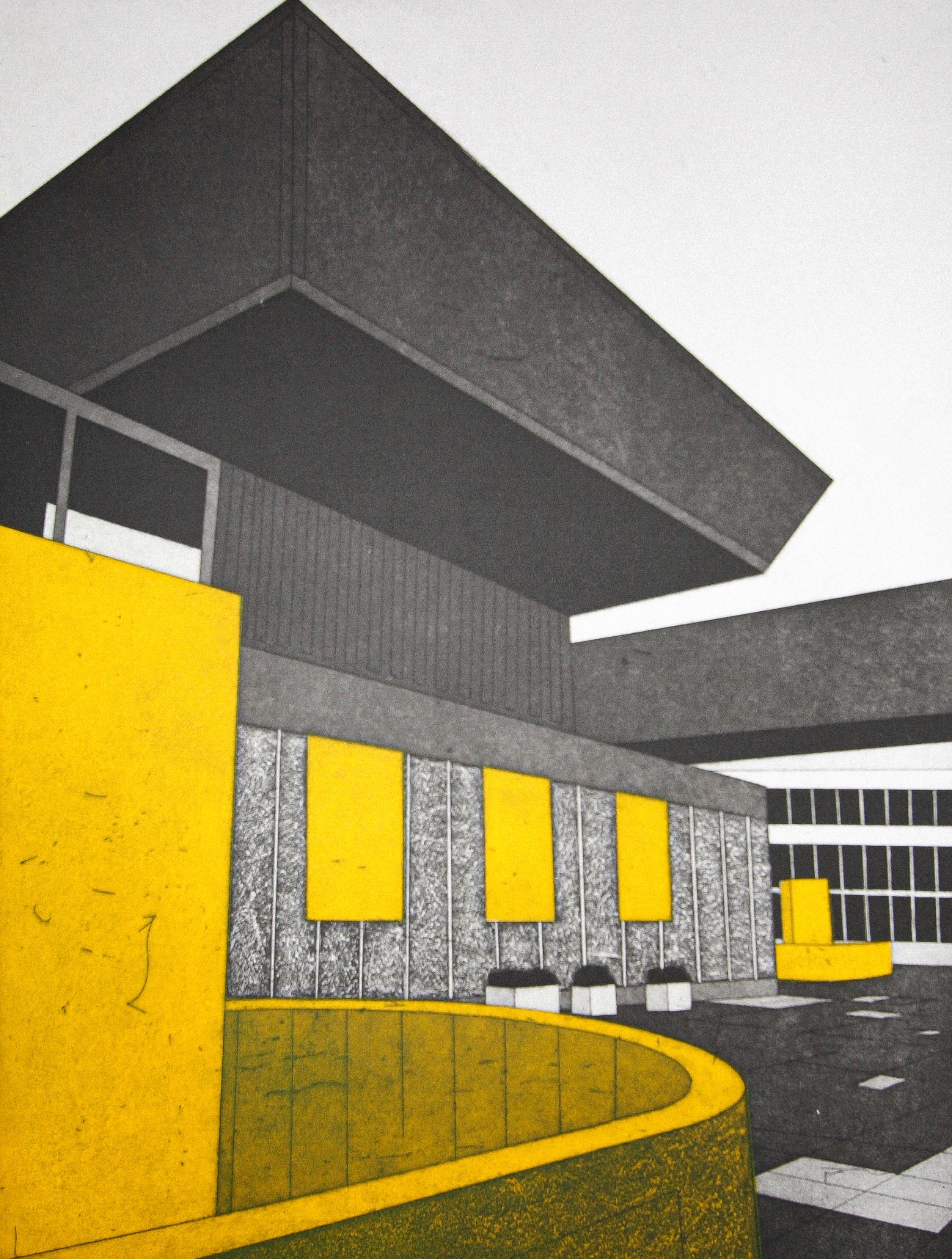
aquatint
The whole plate is covered with grains of resin called an aquatint ground. This is achieved by leaving the plate in a special ‘cabinet’ filled with rosin particles that has been agitated in order to creat a dust cloud. Once these particles have set on the plate the plate is then gently heated in order to fuse the particles onto the plate. Once placed in a bath of acid this allows the acid to bite into the entire area, between the resin grains, creating an overall grainy, tonal effect. This process is repeated numerous times for differing lengths of times to create a variation in tone, the longer the plate is exposed to the acid the darker the tone. This technique is often combined with etching.
Spitbite – Strong acid is painted directly onto the aquatint ground of a plate, the application is controlled in a bath or traditionally using saliva (hence the term 'spit bite'). The combination of acid and water gives a beautiful whispy effect that is almost impossible for the artist to fully control.
Fun Fact - Aquatint is unique in that it was invented/discovered twice! The technique was invented by Jan van de Velde IV in 1650 who guarded the secret so closely he took the secret with him to his grave. Many printmakers attempted to match this technique but none were successful until the French printmaker Jean-Baptiste Le Prince rediscovered the technique in 1768, over one hundred years later!!

